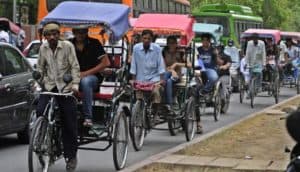Jon managed to go to Bear Island, made numerous trips to and from Castle Black and even sailed far south to Dragonstone to meet Daenerys.
Just like Jon Snow from Game of Thrones, the students of the University of Delhi living in the NCR region are also used to traveling great stretches every day. While they don’t have to deal with the problem of living “away” from home, they don’t have the comfort of living in Karol Bagh or Chattarpur either. Students coming from the NCR region have to deal with daily traveling, security issues, and the resulting loss of productivity.
Here are 9 things that an average Delhi University student living in the NCR would relate to-
- The traveling time: If X, a student of Delhi University, is living in Faridabad, she has to travel for an hour and a half in the metro to come to college. This means she would have to spend three hours every day in the metro alone. Add to that the time which gets spent in taking the e-rickshaw to the college, talking to a friendly face in the way, and waiting for the next metro in the hope of finding a seat. It takes an average NCR student four hours to just ‘travel’. That is life in a metro, literally, and figuratively.
- The lack of attendance: Halfway through the year, the class gets divided into three broad categories:
(a) Hostellers
(b) Those who live in the PGs and within the Delhi region
(c) Those who live in NCR
While the hostellers have the best attendance, the second category manages a decent attendance, and the last category just lets go of those five marks. - The inability to join societies: DU societies are known to be very taxing, demanding, and time-consuming. Hence, most students from NCR, either, don’t join societies or even if they do join them they end up leaving midway.
It becomes impossible to maintain a healthy schedule when traveling eats up important hours of your day. For example, if your class ends at three, followed by three-hour society practice, and two hours of traveling then you’ll reach home at 8 p.m.
(Calculations: 3 p.m.+ 3-hour practice + 2-hour travelling= 8 p.m.).
A regular college student cannot afford this tight schedule. - You’re winning at life if you get to sleep even for five hours: Sleep is for the weak. Tell that to the NCR kid who gets up at five every day for his 9 a.m. class. The morning routine of NCR kid is as follows:(a) You set the first alarm at 5 a.m., the second at 5:05 a.m., the third at 5:07 a.m., and so on.(b) You FINALLY get up at 5:40 a.m.(c) You basically spend the next 20 minutes in bed checking messages and well, doing nothing.(d) The day finally starts at 6 a.m. and you get on with the usual morning routine for the next 40 minutes.(e) You get out of the house at 6:40 a.m., and it takes you about 20 more minutes to reach the metro station.(f) A 2-hour metro journey to your college. (With some luck, you might get a seat)
- Every day is a business day you have to “plan” for: An average day of an NCR kid requires more planning and plotting than any average Red Wedding. You have to make a mind map every night. Say, if you have a class at 9 a.m. the next morning, you have to go through a battle in your mind about whether to get up at 5 or 5:30. And when every day is a “planned business day”, any aberration in the form of a teacher rescheduling class or a class getting preponed at the last moment can be a “disturbance” to the daily business of getting yourself to college and vice-versa.
- Not everyone wants to hear “Class just got canceled”: Class getting cancelled is not always good news, especially for the NCR students who spend their morning travelling from North of the Wall to Westeros (read: Noida/Gurgaon to DU colleges) risk getting killed in Castle Black where members of the Night’s Watch just can’t enough to killing each other (read: survive Rajiv Chowk), and deal with the wildling invasion (read: office goers in Delhi metro). If you have to put with this struggle to get to class, you feel a sense of loss at having to see your struggle go to waste, even if you might not say it aloud.
- Studying. What’s that?: It is almost a universal fact that NCR kids HAVE to spend sleepless nights to make up for the precious time lost in commuting. If an average NCR student reaches home at 7 p.m., the average student living within Delhi reaches home at 4. You can pretty much gauge the number of hours lost.
- You need to spend days planning about the day you’d hang out with your friends: Chilling is no longer about impromptu meet-ups where you casually text your friend, “Hey where are you? Let’s go to Big Yellow Door”. Chilling involves a string of strategies like coordinating the “chilling place” such that it would be convenient for your different friends who live in different regions of the NCR, and coordinating the “chilling hours” such that your NCR friends do not have to reach home too late.
- You learn life skills: Like every dark cloud has a silver lining and every Night’s Watch has a Jon Snow, every great struggle that an NCR student has to go through is a life lesson to learn from. You learn how to stress-management, time-management, and coordination, despite the odds. Whether they help you in college or not varies from student to student, but these life lessons surely come handy further in life.
Image Credits: Rise for India
Vaibhavi Sharma Pathak

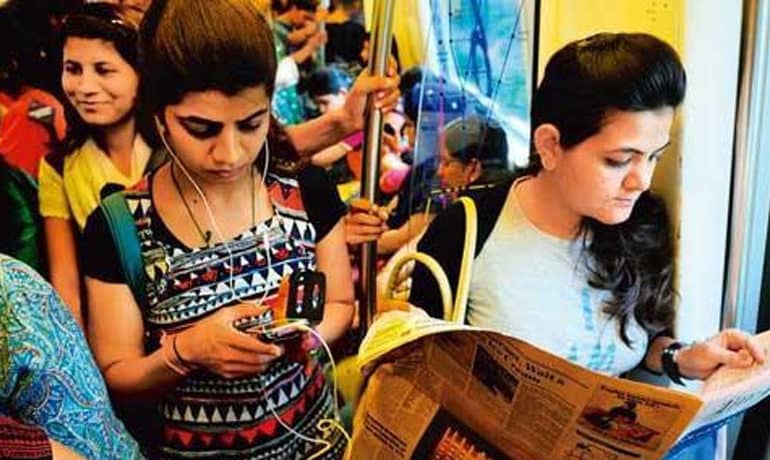
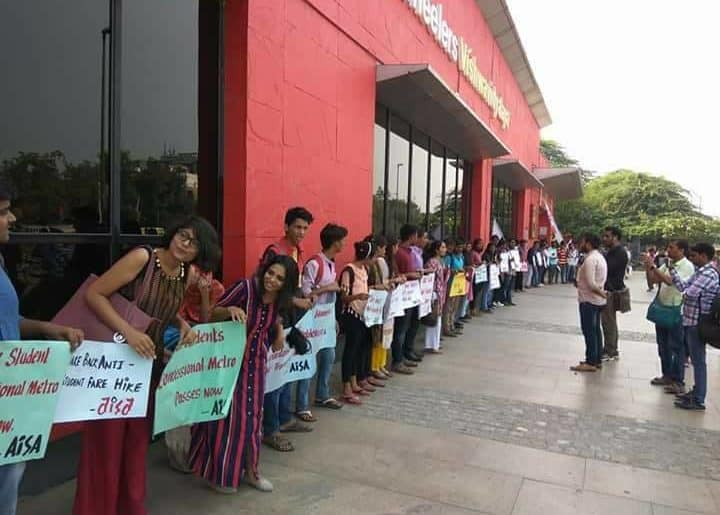
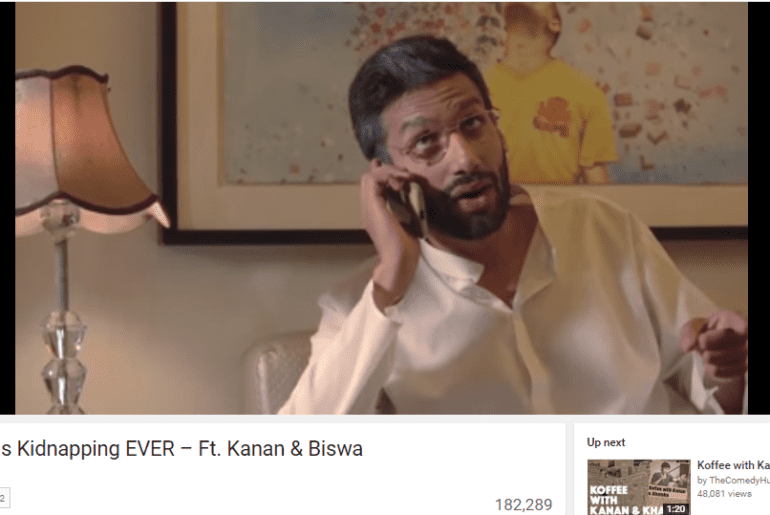

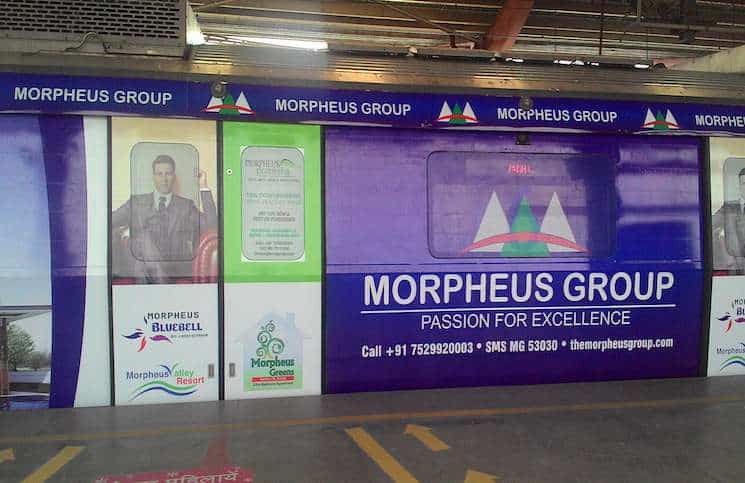
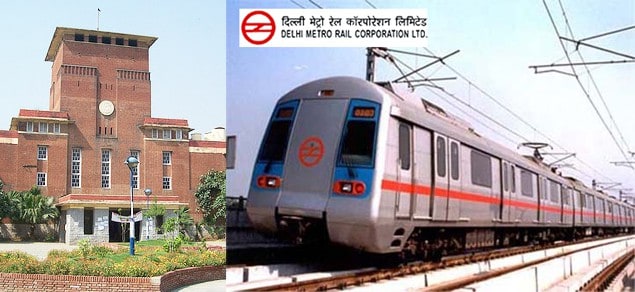
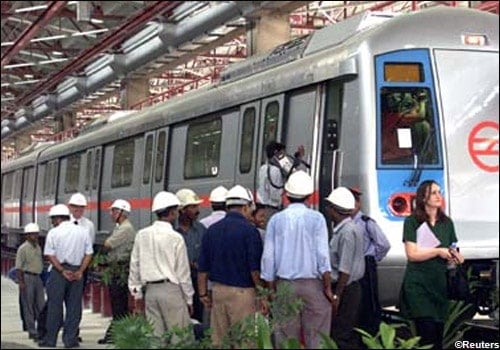
 Picture source: Reuters
As the sun rose over the country this morning, a large part of North India found itself in the middle of the worst power outage in ten years. Citizens of New Delhi, Punjab, Haryana, Rajasthan, Uttar Pradesh, Uttarakhand, Himachal Pradesh and Jammu & Kashmir were left with with no power supply in their homes to carry out day to day activities. Majority of the nation was especially brought to a standstill as all other activities halted due to lack of electricity. Inter- state transport, water supply and public transport faced the brunt of this power cut.
In New Delhi, the metro services suffered as stations were locked out and people were left stranded. Looking closely at the plight of DU Students, as the Delhi Metro (an impetus for commuting) had come to an abrupt halt- students had to rely on over- crowded busses, auto rickshaws or cars on Delhi roads, which already happened to be clogged with traffic.
Adding to their misery, once the students did make the perilous journey to college they discovered that classes had either been cancelled or postponed. “It was horrible, in fact horrible is an understatement. We were squished in the over crowded bus, a friend of mine was on the verge of crying. We had to get off halfway and take an auto- only to find out that classes had been cancelled.” said Riya Anna Kuruvilla, a first year student from Hindu college who had to travel from Dwarka to North Campus.
“I took the metro for granted as I used to travel by it since day one, today I had to take a bus. Being new to this route it was tough for me, but owing to the power cut, I could discover an alternate way of commuting!” Shreya Mudgil, a first year English Hons. student from Bharti College added.
Thanks to the prowess of the authorities most of the electricity supply did return soon bringing life back to normal; however the morning was a bit of a jolt to the whole of North India.
Deepali Datta a first year student from LSR made an uncanny observation she said, “An interesting side of Delhi emerged today as everybody became everybody’s Google Map, people gave way to pedestrians despite faulty traffic lights. Some students like me, did miss out on the attendance for the first lecture, but the lesson learnt was worth it, nothing can stop a city like Delhi. One grid collapsed but another emerged- the People’s Grid.”
A pat on the back to all Delhiites- students, parents, office goers alike- who did made it to their respective duties on time and did not abort any of the city’s activities! And DU students who did manage to get the whole day’s attendance deserve special mention here, don’t they?
Anugrah Gopinath
Picture source: Reuters
As the sun rose over the country this morning, a large part of North India found itself in the middle of the worst power outage in ten years. Citizens of New Delhi, Punjab, Haryana, Rajasthan, Uttar Pradesh, Uttarakhand, Himachal Pradesh and Jammu & Kashmir were left with with no power supply in their homes to carry out day to day activities. Majority of the nation was especially brought to a standstill as all other activities halted due to lack of electricity. Inter- state transport, water supply and public transport faced the brunt of this power cut.
In New Delhi, the metro services suffered as stations were locked out and people were left stranded. Looking closely at the plight of DU Students, as the Delhi Metro (an impetus for commuting) had come to an abrupt halt- students had to rely on over- crowded busses, auto rickshaws or cars on Delhi roads, which already happened to be clogged with traffic.
Adding to their misery, once the students did make the perilous journey to college they discovered that classes had either been cancelled or postponed. “It was horrible, in fact horrible is an understatement. We were squished in the over crowded bus, a friend of mine was on the verge of crying. We had to get off halfway and take an auto- only to find out that classes had been cancelled.” said Riya Anna Kuruvilla, a first year student from Hindu college who had to travel from Dwarka to North Campus.
“I took the metro for granted as I used to travel by it since day one, today I had to take a bus. Being new to this route it was tough for me, but owing to the power cut, I could discover an alternate way of commuting!” Shreya Mudgil, a first year English Hons. student from Bharti College added.
Thanks to the prowess of the authorities most of the electricity supply did return soon bringing life back to normal; however the morning was a bit of a jolt to the whole of North India.
Deepali Datta a first year student from LSR made an uncanny observation she said, “An interesting side of Delhi emerged today as everybody became everybody’s Google Map, people gave way to pedestrians despite faulty traffic lights. Some students like me, did miss out on the attendance for the first lecture, but the lesson learnt was worth it, nothing can stop a city like Delhi. One grid collapsed but another emerged- the People’s Grid.”
A pat on the back to all Delhiites- students, parents, office goers alike- who did made it to their respective duties on time and did not abort any of the city’s activities! And DU students who did manage to get the whole day’s attendance deserve special mention here, don’t they?
Anugrah Gopinath

